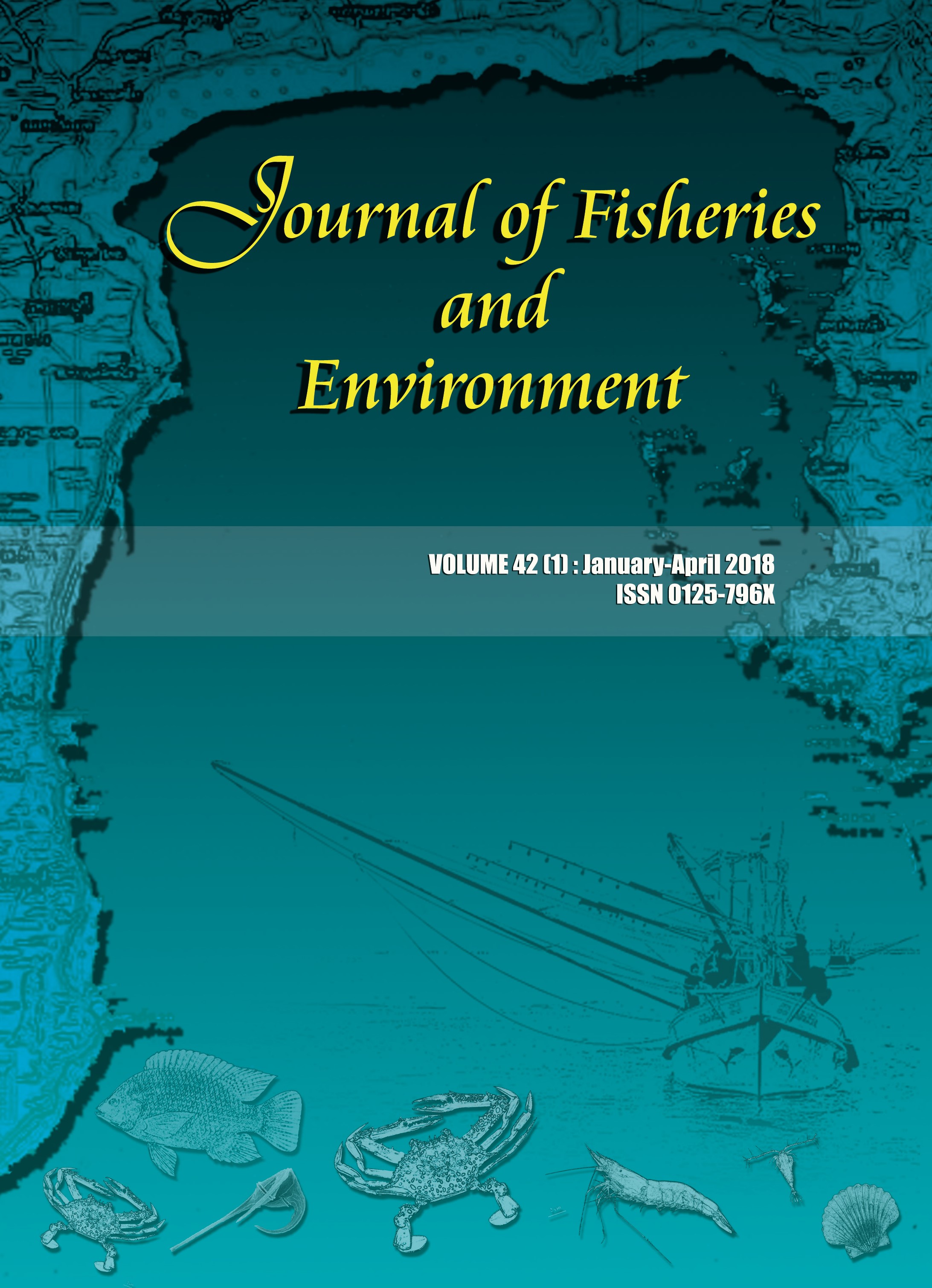The Role of Middle Persons as a Distribution Channel for Small-Scale Marine Capture Fishery Products: Case Study in Rayong Province, Thailand
Main Article Content
Abstract
The main objective of this study was to describe the small-scale marine capture fishery products distribution in Rayong Province, Thailand, which particularly focused on the relationship between small-scale fishers and middle persons who played important roles in buying fish from small-scale fishers. It is important that a co-distribution-management for small-scale marine fishery products among the fishers and/or middle persons with the support from the local government could sustain the fishers’ livelihood and benefit in the selling and buying system. The data were collected by interviewing 297 small-scale fishers catching fish along the three coastal districts and 39 middle persons (5 men, 34 women) in Rayong province. The results indicated that 60% of the middle persons provided loans or fishing gear to fishers to help them with their fishing operation cost and their daily life, in return fishers sold their catch to these middle persons. When a first middle person sold aquatic products to a second middle person or other buyers, the product’s price increased by 25% depending on the aquatic animal species and size. The research also found that the number of middle persons might decrease because of few successors, therefore, it will pave the way for the middle persons to get more buying and selling power in the near future. Hence, the fishers will have less negotiating power in selling their fish. In order to solve this problem, the small-scale marine capture fishery products co-management system among fishers is very important to provide selling power to fishers. If fishers can sell the aquatic products by themselves or fisher's groups, it would be beneficial to them and the customers as well.
Article Details
References
2. FAO. 2008. Present and Future Markets for Fish and Fish Products from Small-scale Fisheries-Case Studies from Asia, Africa and Latin America. Food and Agriculture Organization of the United Nations, Rome. 87 p.
3. FAO. 2014. The State of World Fisheries and Aquaculture 2014, Opportunities and challenges. Food and Agriculture Organization of the United Nations, Rome. 223 p.
4. FAO. 2016. The State of World Fisheries and Aquaculture 2016, Contributing to Food Security and Nutrition for all. Food and Agriculture Organization of the United Nations, Rome. 200 p.
5. Lunn, K.E. and P. Dearden. 2006. Monitoring Small-scale Marine Fisheries: An Example from Thailand’s Ko Chang Archipelago. Fisheries Research, 77: 60-71.
6. NORAD-FAO. 2012. A value-chain analysis of international fish trade and food security with an impact assessment of the small scale sector: Synthesis of back ground reports. Food and Agriculture Organization of the United Nations and the Norwegian Agency for Development Cooperation. 164 p.

